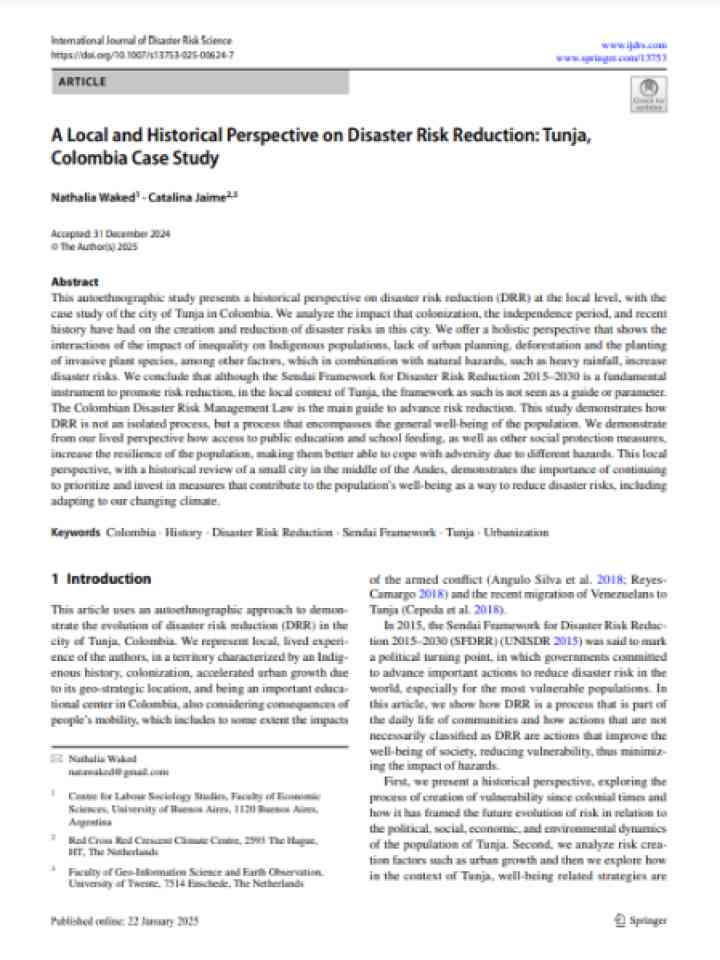A local and historical perspective on disaster risk reduction: Tunja, Colombia case study
This autoethnographic study presents a historical perspective on disaster risk reduction (DRR) at the local level, with the case study of the city of Tunja in Colombia. The authors analyze the impact that colonization, the independence period, and recent history have had on the creation and reduction of disaster risks in this city. The study offers a holistic perspective that shows the interactions of the impact of inequality on Indigenous populations, lack of urban planning, deforestation and the planting of invasive plant species, among other factors, which in combination with natural hazards, such as heavy rainfall, increase disaster risks.
The authors conclude that although the Sendai Framework for Disaster Risk Reduction 2015–2030 is a fundamental instrument to promote risk reduction, in the local context of Tunja, the Colombian Disaster Risk Management Law remains the main guide to advance risk reduction. This study demonstrates how DRR is not an isolated process, but a process that encompasses the general well-being of the population. The study demonstrates from a lived perspective how access to public education and school feeding, as well as other social protection measures, increase the resilience of the population, making them better able to cope with adversity due to different hazards.
Explore further
